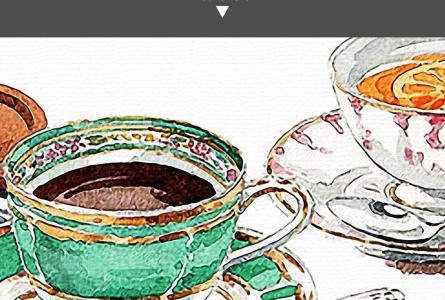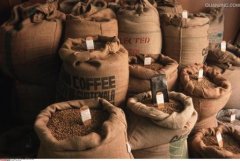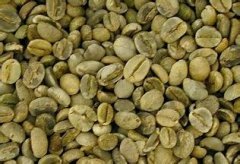A brief introduction to the cultivation of boutique coffee in Latin America, geographical location, climate and altitude

Mexican (Mexico) aroma 3 minutes brightness 4 minutes mellow 3 points flavor 4 points aftertaste 4 points
Suitable for baking: Full cityfull city, start the pot at the beginning of the second explosion, whether it is mixed with the formula to make Espresso or brew a single product, Mexican coffee beans can be said to have a unique flavor.
Mexican coffee is a coffee-producing area from Cottpe and Veracruz in the north to Plumas in the central Oaxaca region to Chiapas in the southernmost, and the flavor varies from region to region. Although there are many producing areas in Mexico, but because the quality stability is not high, so many attempts can be made to select the high quality ones. Basically, the coffee standards of Oaxaca and Chiapas are relatively neat. Chiapas is close to the Vevetnango region of Guatemala, so its flavor is similar. In fact, Mexico is also a big producer of organic coffee with organic certification. Generally speaking, Mexican coffee has a light flavor, but it is mild and delicate, and the flavor is good, so it is worth a try.
Columbia (Colombian) aroma 3.5 minutes brightness 4.5 minutes mellow 3.5 minutes flavor 4.5 points aftertaste 4.5 points
Suitable for baking: Medial/City/Full city/Espresso/Dark/French Columbia beans are one of the few coffee beans that range from shallow roasting to very deep roasting, from clean light roasting to deep roasting sweetness, in such a wide range
Columbia beans will have different styles and features.
Once the second largest coffee producer after Brazil, Colombia, now the world's largest supplier of washed beans, has been overtaken by Vietnam. Colombia has become synonymous with good coffee after years of image-building. Despite the balanced flavor, thick texture, famous sour taste and aroma, most Colombian beans are mediocre and have no personality if you taste them carefully. When choosing Colombian beans, you should not only look at the grade marks, but also pay attention to the producing areas, because Colombia is currently graded according to the size of beans, so the Supremo or Excelso on the coffee bag refers to the size of beans rather than the quality, but the size of beans is not necessarily related to the flavor of the entrance, but is closely related to the altitude of the place of origin and taste, so this grading system is often criticized. In fact, most of the medium,
South American countries have switched to altitude classification, and only Colombia maintains this traditional classification system, which many Colombian coffee makers have recognized and have begun to demand a change in the classification system. Colombia's famous producing areas include Medellin, Armenia and Manisales, so the word MAM is sometimes seen on coffee bags, indicating that the coffee beans may come from any of these three producing areas. Almost all of Colombia's finest coffee beans come from traditional small farms, which grow old coffee trees planted by Typica, which are well planted and carefully harvested and treated, so they are of high quality but relatively low in yield.
Peruvian (Peru) aroma 3 minutes brightness 4.5 minutes mellow 3 points flavor 4 points aftertaste 4 points
Suitable for roasting: Full city/Espresso/Dark medium and deep roasting is the most suitable for Peruvian coffee beans, too shallow to show flavor and sweetness.
Peruvian coffee used to be uncommon internationally, and it is generally believed that its handling process is hasty, so the evaluation is poor, which is the result of a previous state monopoly. In fact, Peruvian coffee has good growth conditions, and many of them are grown organically, so the quality of coffee beans has always been quite good. The famous producing area of Peruvian coffee is Chanchamayo, while Notre and Cuzco also have excellent works occasionally. Good Peruvian coffee beans are good in texture, acidity and complexity, which can be said to have both the brightness of Central American coffee and the mellowness of South American coffee.
Important Notice :
前街咖啡 FrontStreet Coffee has moved to new addredd:
FrontStreet Coffee Address: 315,Donghua East Road,GuangZhou
Tel:020 38364473
- Prev

A brief introduction to the planting situation, geographical location, climate and altitude of Taiwan's high-quality coffee with mellow flavor.
In 1941 (the 16th year of Rizhaohe), most of the raw beans were shipped back to Japan. The planting area of coffee in Taiwan has reached 75 hectares, and it was called the largest coffee factory in the far East in its heyday. In 1945 (Rizhaohe 20 years), the area of coffee cultivation in Taiwan expanded to 113 hectares after the war. After the surrender of Japan, Taiwan was restored, and the national government strongly advocated the reclamation of fertile land and the cultivation of cash crops.
- Next

A brief introduction to the description of flavor and aroma characteristics of Latin American coffee with excellent balanced performance
Nicaragua (Nicaragua) aroma 3.5 minutes brightness 4 mellow flavor 4 points aftertaste 4 points suitable for baking: people who like deep-baked taste of City/Full city can try Jinotega and Matagalpa, baking the second burst when the beans are dense, the flavor is thick but well balanced, with a strong bittersweet, non-
Related
- Detailed explanation of Jadeite planting Land in Panamanian Jadeite Manor introduction to the grading system of Jadeite competitive bidding, Red bid, Green bid and Rose Summer
- Story of Coffee planting in Brenka region of Costa Rica Stonehenge Manor anaerobic heavy honey treatment of flavor mouth
- What's on the barrel of Blue Mountain Coffee beans?
- Can American coffee also pull flowers? How to use hot American style to pull out a good-looking pattern?
- Can you make a cold extract with coffee beans? What is the right proportion for cold-extracted coffee formula?
- Indonesian PWN Gold Mandrine Coffee Origin Features Flavor How to Chong? Mandolin coffee is American.
- A brief introduction to the flavor characteristics of Brazilian yellow bourbon coffee beans
- What is the effect of different water quality on the flavor of cold-extracted coffee? What kind of water is best for brewing coffee?
- Why do you think of Rose Summer whenever you mention Panamanian coffee?
- Introduction to the characteristics of authentic blue mountain coffee bean producing areas? What is the CIB Coffee Authority in Jamaica?

